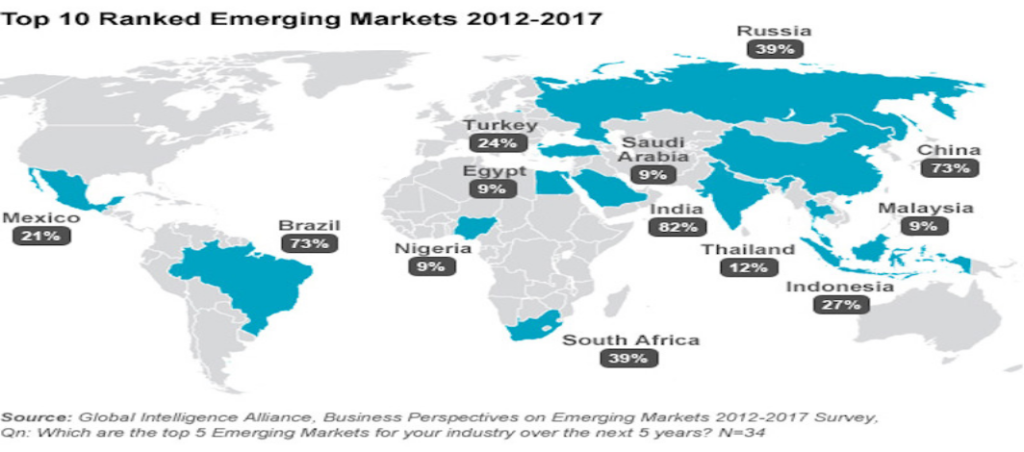The top emerging countries will vary from list to list, but a few of the most commonly recognized “emerging nations” are listed below.
- BRIC countries
- Brazil, Russia, India, China, South Africa.
- These countries are known as the BRIC nations, an association formed in 2009 by the leaders of these countries to improve their political relationships and trade.
- Brazil, Russia, India and China. These countries are currently considered the top four emerging markets.

But while the emerging market spotlight has long been focused on the BRIC nations of Brazil, Russia, India, and China, the report, entitled Reaching the emerging middle-classes beyond BRIC, notes that attention is turning to smaller markets. The shift is being driven by the rates of faster economic and demographic growth in many of those markets – factors that are together fueling growth in consumer spending, including highly valued spending areas such as education.
Market Size: Aggregated purchasing power and number of potential clients within the relevant market segments;
Market Accessibility: General ease of doing business, regulation, transparency, communication, and infrastructure;
Market Match: Overlap between needs and preferences in the market and products and services provided by marker suppliers.
- CIVETS countries or Colombia, Indonesia, Vietnam, Egypt, Turkey and South Africa. These countries are predicted by some to be among the next emerging markets to quickly rise in economic prominence
| Morocco Philippines Poland | Chile Czech Republic Hungary |
| South Korea Taiwan Thailand | Indonesia Malaysia Mexico |
Other emerging markets include:
CIVETS countries: Colombia, Indonesia, Vietnam, Egypt, Turkey, and South Africa
E7 countries: Brazil, China, India, Indonesia, Mexico, Russia, and Turkey
Group of Five (G5): Brazil, China, India, Mexico, and South Africa
World Economics has combined 24 countries to represent the Emerging Markets. Overall these countries account for 50% of Global GDP and 68.5% of global GDP growth in the past 10 years (2013-2023).
Next year, Emerging Market Growth growth is expected to decelerate to 3.6% / to a slightly below-trend 3.8% in 2024 on average from around 4% this year. Importantly, the growth premium in favour of Emerging Markets over Developed Markets is projected to continue widening. Asia is set to register the strongest contribution to world GDP once again. Nov 23, 2023
Compared to their developed market peers, many emerging market companies have the potential to increase earnings at a faster rate due to increasing living standards in their domestic markets and rising demand from the rest of the world. Nov 15, 2023
The Next Eleven (or N-11) are eleven countries—Bangladesh, Egypt, Indonesia, Iran, Mexico, Nigeria, Pakistan, Philippines, South Korea, Turkey, and Vietnam— identified by Goldman Sachs investment bank as having a high potential of becoming the world’s largest economies in the 21st century along with the BRICs.
Looking beyond China, we explore below the three rising emerging market countries where we see particularly compelling investment opportunities. India, Brazil, and Saudi Arabia are leaders in their respective regions, all benefiting from economic reforms and digitization initiatives.

Saudi Arabia’s Trade Surplus: October 2013
December 28, 2023 Saudi Arabia is one of the top 20 export and import markets in the world. In 2022, the US imported roughly 456,000 barrels of crude oil per day from Saudi Arabia. China is Saudi Arabia’s largest trading partner and the world’s largest buyer of crude oil. According to the Indonesian Trade Promotion Center, Saudi … Continue reading Saudi Arabia’s Trade Surplus: October 2013


